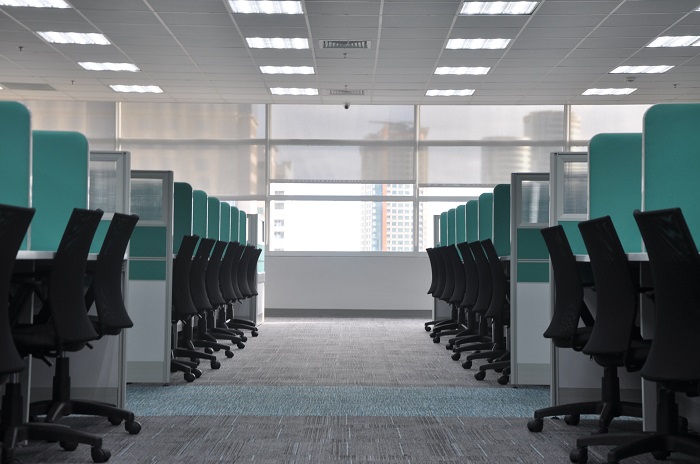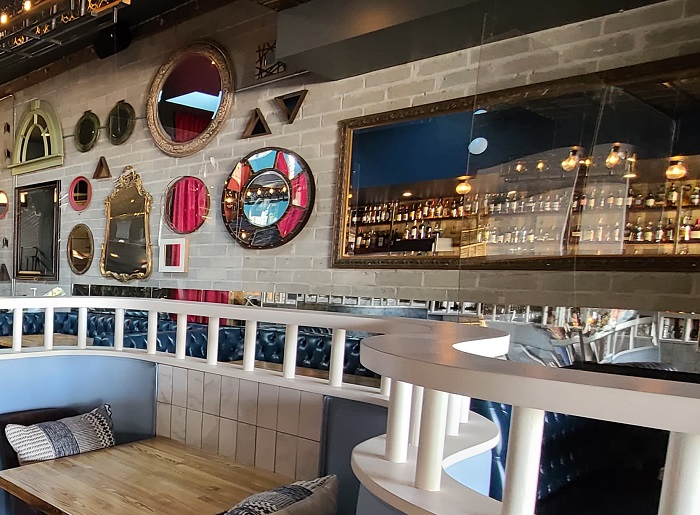The workspaces between us
A recent Request for Proposals shows how architects and engineers will use their design skills in the era of COVID-19.
This RFQ, from Rowan County, N.C., sought architectural and engineering services for a needs assessment, programming, and design services for renovations to County facilities. The goal for the designs was to minimize the transmission of COVID-19 between coworkers and citizens and for ADA compliance. The project included options for safety glass, partitions, intercom systems, and drive-thru facilities (IMS 516414-1).
IMS covered this project for its architectural/engineering/consulting clients. Details on these types of professional services are provided through daily leads from RFPs/RFQs and in Advance Notices of upcoming projects. IMS continues to cover public sector projects as the country deals with the public health crisis.
And architects and their clients are already considering how the pandemic will change the way we use our homes, offices, and government buildings.
A story on residential homes in Architectural Digest identified seven “requests clients will make post COVID-19.” These include a shift back to more traditional floor plans with clearly defined rooms (rather than open space living) and designing places to exercise at home.
“Taking the concept of reconfiguring the home a step further, clearly delineating space is of utmost importance in terms of establishing efficient spaces in which we live, work, learn, and play within one residence,” the article said.

Along with physical distancing, masks are effective in slowing the spread of the virus (Source: CDC).
An article by Tara Hipwood on Science X discusses how housing desires may change in the COVID-19 era for lockdowns and remote working. Those needs range from heating/cooling residential areas during the day (when we would normally be at the office), to finding personal space at home. Open-plan living may lose some of its appeal.
“Being able to supervise children while working may be beneficial for some,” Hipwood wrote. “But for others, the lack of privacy afforded by these large, open plan spaces has no doubt presented challenges. Particularly when, for example, you might want a quiet corner in which to hold online calls. Self-isolating is also more difficult in such spaces, as is quarantining objects coming into the home.”
An article on Forbes.com includes perspectives from five architects and designers on the future of residential design. Homeowners will want more storage and adaptable spaces. Kitchen designs will focus more on function, more than the ability to impress, the designers said.
COVID-19 will also change the look and function of the workplace. Millions of workers shifted from an office environment to working remotely. According to an article in EHS Today, future offices may have layouts with less density and more space for critical collaborations and client interactions.
“The office also will become the main hub for in-person meetings and group interaction – requiring substantial space for conference rooms, conversation hubs, and flexible private areas of all sizes,” the article stated.

The benefits of solid barriers and ample separation between workers make cubicles well-suited for post-COVID-19 offices (Source: Kate Sade).
Government agencies and private companies are now trying to figure out how much space they will need, where employees should be based, and the optimal space layout for offices and service centers.
A case in point: the State of Oklahoma released an RFP at the end of June for a consultant to prepare a strategic real estate plan for its programs and agencies in response to COVID-19. The State was seeking to develop standards for health and safety, space utilization, and building systems, as well as to evaluate building conditions and recommendations for agencies to co-locate (IMS 522423).
In terms of hygiene, office designs will have more than just a bottle of Purell at the front desk. The article quoted architect Daniel Montroy, who said, “Technology- and equipment-wise, offices will likely see more hands-free and easy to disinfect fixtures and materials, such as self-opening doors and non-porous surfaces.”
In late June, the City and County of Denver, Colo., released an RFP for mechanical/electrical/plumbing engineering services to design a plan for touchless fixtures in several public facilities (IMS 522146).
Plexiglass partitions and office dividers will fill in many open-office configurations. An article in Wired magazine starts by simply stating, “The cubicle is making a comeback.”
There may be staggered shifts, frequent cleanings, and temperature checks for employees returning to the office. “But one of the most important innovations may turn out to be cardboard or plastic dividers that turn open-plan offices into something more reminiscent of the 1980s,” the article states.
The Centers for Disease Control and Prevention has recommendations for creating safer office environments. The process includes an evaluation of building components like HVAC systems and measures to increase outdoor air flow. A hazard assessment will identify where employees might be exposed to COVID-19, such as meeting rooms or check-in areas.

Spaced seating and plexiglass barriers in restaurants are measures that many offices will also need to take to keep employees safe.
The next steps involve changes to interiors, and the American Industrial Hygiene Association has a Guidance Document for office settings. These are the main aspects to be addressed, according to the AIHA: “Workplace configuration, conference rooms, lobby and common areas, kitchens, ventilation, and enhanced cleaning practices.”
This means reception seating areas may be removed. Workstations will be reconfigured so employees are spaced further apart or do not face each other. Individual water bottles will replace the water cooler gathering place. And meetings in the conference room should be shorter, and with fewer people.
It’s a new day with new challenges, with design solutions that range from low-tech plexiglass barriers to high-tech air filtration systems. We will soon see architectural concept drawings that highlight social distancing measures. Office managers will learn to think like epidemiologists. And space planners will consider the rooms and storage spaces that are needed during government-mandated lockdowns. Through this process, the designers, employers, and public agencies will put a premium on our health and well-being.